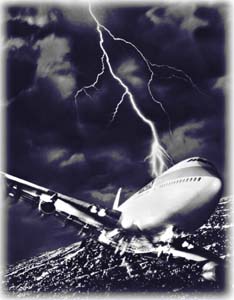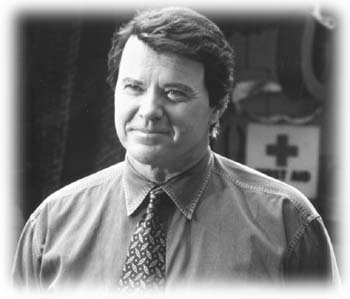![[Metroactive Arts]](/arts/gifs/art468.gif)
![[Metroactive Arts]](/arts/gifs/art468.gif)
[ Arts Index | Metro | Metroactive Central | Archives ]
The Dying Game
Are television's new death and disaster programs cautionary tales, ratings stopgaps or real-life snuff films in prime time?
By Zack Stentz
DO SNUFF FILMS actually exist? By most standard definitions of the term, the answer is no. The urban legends have defined a snuff film as a film or videotape in which a person is literally murdered in front of the camera for the commercial goal of selling the finished product to a secret coterie of sickos for entertainment purposes.
That definition means that the gruesome tapes made by serial killers such as Leonard Lake, Charles Ng, Paul Bernardo or Karla Homolka of their in-progress sex-torture murders don't qualify. The perpetrators were almost certainly going to kill anyway and created video records for their own twisted pleasure rather than for profit.
As various criminal-justice experts have pointed out, it makes little sense to leave a huge trail of evidence by filming and distributing one's for-profit crimes. After all, modern special-effects techniques can legally replicate the most heinous acts in a way that satisfies even the most perverse tastes while still letting the producers assure us that no humans were abused or butchered in the making of this video.
Just as disturbing in its own way has been the recent proliferation of real-life scenes of death and destruction on prime-time television in the form of "disaster" programs with names like Real TV, When Animals Attack, When Disaster Strikes and The World's Scariest Police Chases.
This taste for actual gore isn't new, of course. On one level, particularly memorable incidents of televised death provide modern Americans with some of our only shared experiences. The 1986 Challenger explosion, for instance, gave Generation X its very own "Where were you when ...?" moment to compare with the Kennedy assassination's lasting impact on the memory of the Baby Boomers. Few are the souls, though, who kick back in front of the television at the end of a hard day to watch the Zapruder film for entertainment.
Commercially available real-death footage was once limited to bottom-of-the-shelf video-store offerings such as the Faces of Death series so beloved by callous teenagers and pirated, 12-generation tapes passed around among collectors. But now carnage has been packaged into neat, hour-long programs, ready to be broadcast right after Melrose Place.
These "must see to believe" specials have become favorites of the networks (especially, and predictably, Fox) and independent stations alike, given their low production costs (get some old news footage from the affiliates, hire an editor and narrator, and voilá!, America's Gruesomest Home Videos). They are perfect for plugging schedule holes left by the early cancellation of low-rated fall series.
THE FEBRUARY sweeps program The World's Scariest Police Chases reaped such rich ratings that it helped propel Fox into the number-two spot for the month for the first time in the upstart network's history.
I tuned in mainly because the previews promised that we'd see the glorious San Diego tank chase of 1995, when a disgruntled veteran walked onto an army base and drove off in an M-60, flattening parked cars and demolishing a Winnebago before getting caught on a freeway's median divider and blasted through the neck by a Highway Patrolman's pistol.
In typical teasing fashion, they saved the damn thing until last, and for the rest of the hour, I had to listen to übersensitive guy narrator Peter Coyote tut-tut about the dangers of fleeing from law enforcement over endless shots of Dukes of Hazzardlike onscreen carmaggedons.
You see, this entire program was meant to be a "cautionary tale," warning us to pull quietly to the side of the road when signaled to stop by an officer's siren. But when the stern and sensible voice-over advice was played over the undeniably thrilling images of burning rubber and crunching steel, the effect was akin to the old-style porno films that began with a lab-coated doctor assuring us that the raunchy sex about to be screened was based on the latest scientific research. In neither case were many viewers watching for educational purposes.
More recently, KPIX newscaster Dave McElhatton had the decency to drop the sanctimonious pretense and openly declare that "viewers watched in a mixture of horror and fascination" when he described public reaction to the real-life version of the De NiroPacino film Heat that took place on the streets of North Hollywood under the "thwop-thwop-thwop" of countless helicopters.
Automatic-weapons fire in populated areas, body-armored maniacs striding around firing AK-47 bursts at news choppers (who didn't secretly wish to see one of those "eye in the skies" get nailed and go down in flames?), all ending in a gruesome bullet through the brain--the two ill-fated robbers weren't very good criminals, but they certainly gave the viewing public an evening's worth of titillation.
Air shows and car races seem to be especially good sources of spectacular death footage for prime time, as dangerous stunts are performed in full view of countless camcorders, all ready to capture disaster for posterity. Every year seems to produce several fatal crashes seemingly tailor-made for the pyrotechnic tastes of the television audience, what with the irresistible combination of exploding fuel and expensive chunks of high-tech hardware reduced to molten slag in a matter of seconds.
DESPITE THEIR vaunted realism, these televised disaster-fests provide viewers with a look at violence every bit as skewed and unrealistic as the harmless high-kicking on Mighty Morphin Power Rangers or the death- and shrapnel-free explosions on G.I. Joe. The editing and selection process ensures that the violent acts seen on the news and "reality" shows are the ones that most confirm to our cinematic expectations.
And most of the time, real-life violence just isn't nearly as spectacular as the cinematic variety. On television, gasoline fumes get added to black-powder charges to make the explosions more fiery, and 12-gauge shotgun blasts get dubbed in during sound postproduction to make even the tiniest handguns sound impressively lethal.
In 1990, this cognitive dissonance between real and televised violence nearly killed me, when the police shot and killed an armed psychopath 100 yards from the building in front of which I was obliviously standing. I neglected to duck and cover until after the mayhem ended, because I didn't realize that the rapid popping sounds I heard came from firearms. Real gunfire didn't sound nearly as dramatic as it did on an episode of NYPD Blue or Renegade.
By culling the countless hours of shaky, hand-shot videotape into a series of thrilling, rapidly edited prime-time specials, the networks are giving the populace as unrealistic a view of death as any Die Hard film.
Real-life violent death rarely plays out under the glare of television cameras, and it never happens in super slo-mo, with colorful blood squibs exploding rhythmically while Sam Peckinpah choreographs every balletic twitch and shudder.
When the Reaper finally does come for a television addict, he or she probably won't be terrified so much as disappointed by the lack of production values involved. Poor lighting, muddy sound, lame special effects--ending a life isn't very entertaining at all.
[ Metro | Metroactive Central | Archives ]
This page was designed and created by the Boulevards team.

All Disasters Great and Small: If Fox could capture an airline disaster as big as the one that strikes in "Turbulence," ratings would no doubt soar.
Look Out, It's Babe!: Robert Urich keeps his eye peeled for feral fiends as the host of Fox's "When Animals Attack."
From the March 20-26, 1997 issue of Metro
Copyright © 1997 Metro Publishing, Inc.